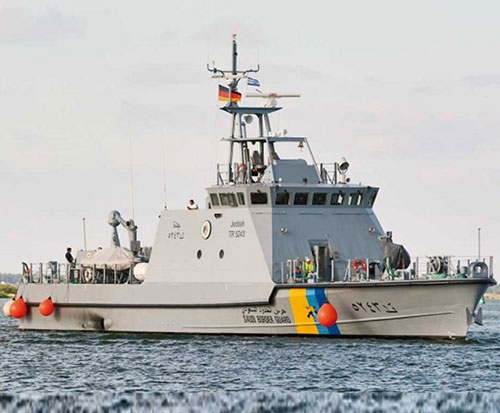Three years of falling weapons and military hardware exports have gone into reverse, reaching almost €8 billion in 2019. The figures have been criticized as proving that controls on weapons deliveries are not working, Deutsche Welle (DW) reported.
German arms exports rose 65% from January to mid-December 2019 compared to 2018 and hit a record of €7.95 billion ($8.8 billion), according to Economy Ministry figures. Politicians from the socialist Left Party and the Greens requested the data, which has been seen by DW.
The documents showed that two of Germany’s top 10 arms export customers, Egypt at number two and the United Arab Emirates (UAE) at number nine, were active participants in the war in Yemen, in spite of government assurances that Germany would no longer arm those countries.
The figures show government-approved exports of weapons, vehicles, and warships beat the previous record in 2015, which was followed by three consecutive years of drops in the value of exports.
Germany’s total export licenses had already exceeded last year’s total of €5.3 billion by the middle of the year, the figures revealed.
The most controversial exports are those to so-called third countries: defined as neither European Union or NATO members (or “NATO-equivalent,” such as Australia). The share of total exports to third countries fell from 52.9% to 44.2% compared to the previous year, but that is partly because overall sales increased. In absolute terms, sales to third countries rose by €1 billion, and five of the top 10 export destinations were third countries.
Economy Minister Peter Altmaier blamed the huge increase on a backlog caused by the months long wrangling to form a coalition following Germany’s 2017 election. In his answer to the Green party’s information request, State Secretary Ulrich Nussbaum repeated a line familiar from the government’s regular arms export reports: that the total value of exports isn’t an “adequate yardstick” of policy.
“More important is the type of goods and their purpose,” he wrote. “The government pursues a restrictive and responsible arms export control policy.”
It’s true that large contracts with long lead times, for instance for submarines or tanks, often skew export figures, but the government’s answers to a similar information request made in November showed that it rarely blocks an arms deal. In the January-to-October period of both 2018 and 2019, less than 1% of applications from German arms firms were denied: a total of 88 in 2018 and 56 in 2019, out of over 11,000 in 2018 and 9,900 in 2019.
Keul also had little time for the notion that other major western arms exporters, like the US, France, and Britain, have less public discussion about arms sales and so weaker export controls than Germany. “There are debates in those countries too,” she said, citing a UK high court ruling from June that made arms sales to Saudi Arabia unlawful, while the US Congress voted in July to block arms sales to Gulf nations, a decision then vetoed by President Donald Trump.
She also pointed out that Germany has laxer rules on end-use controls than the US, and is less restrictive about allowing arms companies to start joint ventures than France.
The largest number of German weapons deliveries in 2019 went to Hungary, where exports reached €1.77 billion, followed by Egypt at €802 million and the United States at €483 million.
Exports to Budapest made up almost a quarter of the total value of all approvals. Prime Minister Viktor Orban’s right-wing, nationalist government is currently engaged in a massive military upgrade.






















